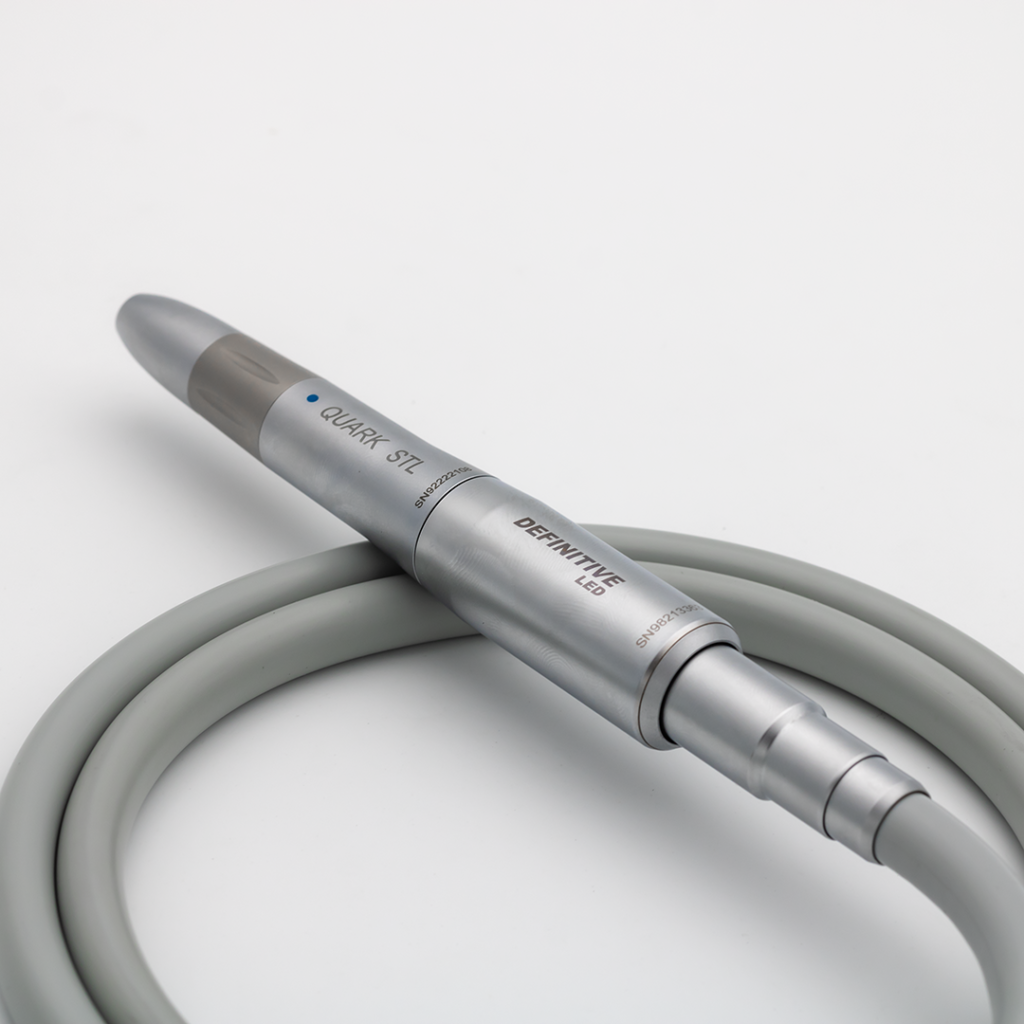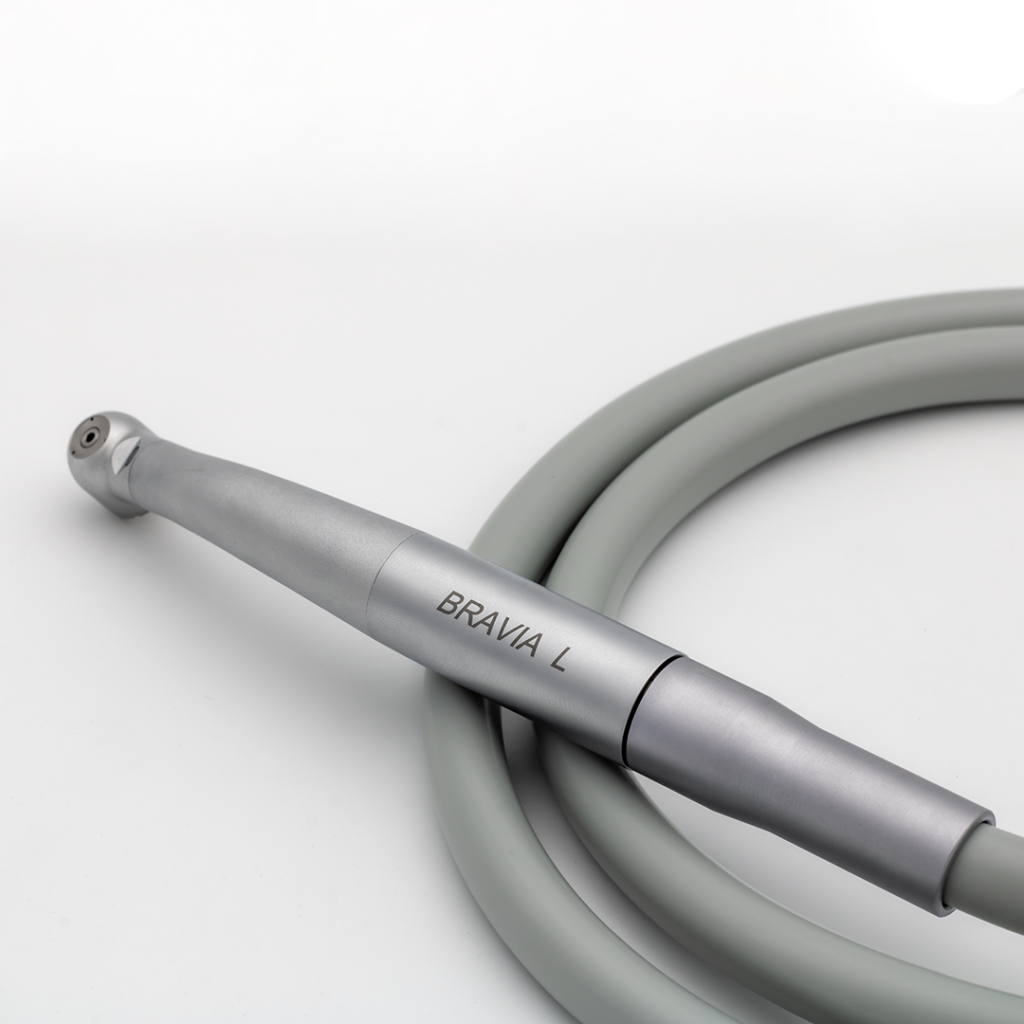DIFFERENCE BETWEEN TURBINES AND MICROMOTORS ON A DENTAL UNIT
Micromotors and Turbines are commonly used in dental procedures, but they differ. It’s important to note that dental professionals may use both the turbine and the micromotor in their practice, as each tool serves specific purposes and complements each other in various dental procedures.
THE DESIGN
Turbines: A high-speed handpiece typically operates at speeds ranging from 300,000 to 500,000 revolutions per minute (rpm). It consists of a small and lightweight handpiece with an integrated air-driven turbine. The turbine is powered by compressed air.
Micromotors: A micromotor is a low-speed, typically ranging from 5,000 to 40,000 rpm. It consists of a larger handpiece with an attached micromotor, which can be electrically powered or pneumatically powered. They may include adjustable speed and torque settings, as well as additional features like LED lighting, which can enhance visibility during procedures.

SPEED AND TORQUE
Turbines: The turbine’s main characteristic is its high rotational speed, allowing for efficient cutting and removal of dental tissues. However, it typically has lower torque compared to a micromotor.
Micromotors: Although operating at lower speeds, the micromotor provides higher torque. This makes it suitable for applications requiring precision, control, and power.

APPLICATION
Turbines: Turbines are primarily used for high-speed procedures, such as cutting through enamel, dentin, and dental restorative materials. They are commonly employed in tasks like tooth preparation for fillings, crown and bridge work, and sectioning of teeth.
Micromotors: Micromotors are typically used for low-speed procedures that demand precision and control. Examples include polishing and finishing dental restorations, adjusting occlusion, removing caries, and performing endodontic procedures like root canal preparation.
